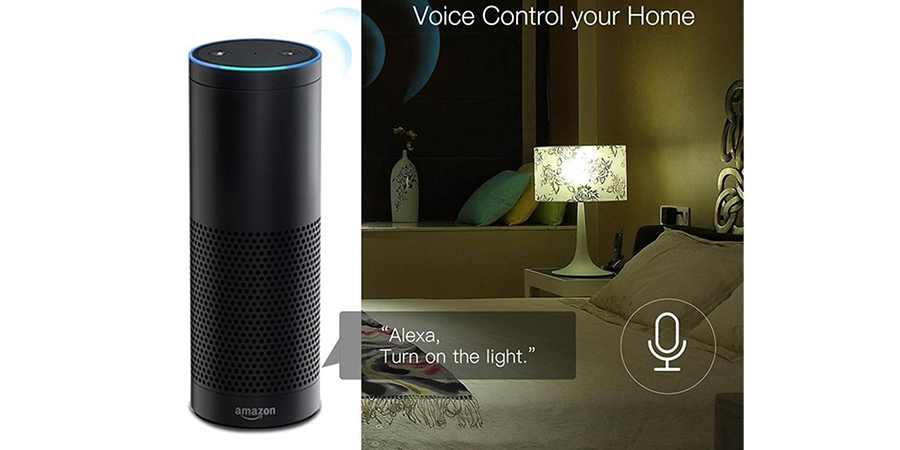The Internet of Things (IoT) will transform the lighting industry by creating lighting systems that are advanced, energy-saving, and cost-effective. The next generation of lighting infrastructure harnesses these technologies to enhance safety, increase productivity, and extend the reach of command-and-control systems within and between structures.
Table of Contents
An emerging market of smart lighting and IoT applications
Current and future trends of IoT lighting systems
The future of smart lighting and IoT
An emerging market of smart lighting and IoT applications
Smart lighting is emerging as one of the key applications of the Internet of Things. Many users have already purchased and installed IoT lighting systems in their buildings, and the global smart lighting market is expected to reach a value of USD 30.00 billion by 2025.
Smart lighting is the fourth-most mature IoT tech specialty and one of the closest IoT technology adoptions. Tapping into the IoT lighting market is about more than just lighting products for consumers; it’s also about building a foundation for smarter cities and buildings by using sensors and networks to reduce costs and increase efficiency.
Current and future trends of IoT lighting systems
IoT lighting in smart cities
IoT-enabled lighting drives towards the betterment of a city by using information and communication technology (ICT) to make the infrastructures more efficient. Intelligent lighting infrastructures such as street lights and pathway lights play a significant role in increasing the overall quality of life of residents by reducing power consumption and crime rates.
IoT-controlled street lights
IoT technology is used to control and manage street lighting remotely. For example, street lights connected to a mesh network can be dimmed based on the traffic needs of the geographic area. Thus, street lights can be controlled not only manually but also remotely in real-time.
Lighting controllers can connect to street lights via an Ethernet cable or wireless connection and enable control of the light’s specific features in real-time. The lighting controller is connected to sensors that detect the activity around a street light and dim or brighten it depending on the surroundings. These sensors might detect cars, people, or other factors that require more or less light.

Smart pathway lighting
IoT-based lighting systems are used on pathways such as footpaths and bike lanes. They use sensors to detect when a pedestrian or cyclist approaches a crosswalk and automatically turn the lights on to provide them with extra visibility. This system is suitable for cities that have many pedestrians and cyclists.
Smart pathway lights can pinpoint areas where lights are needed based on usage patterns. It’s a new way to illuminate walkways, driveways, and sidewalks. Pathway lighting is available in several different models and often comes with a solar panel that recharges the batteries during the day.

Traffic lights
IoT has changed the way traffic lights operate. Smart traffic lights are equipped with microcontrollers and sensors that detect how many cars are crossing at a particular intersection and in what direction they are headed. This information is then sent to a central system to determine whether or not to change the light for oncoming traffic.
Smart traffic lights are interconnected and interlinked, which means that they can operate in tandem to manage traffic and even take into account events on the road, such as accidents or roadwork. The sensors can also be used to detect pedestrians and cyclists at crosswalks and adjust the timing of the lights accordingly to give them more time to cross the street.
IoT lighting in smart buildings
Hotels
Hotel lighting systems have changed drastically over the years. They have gone from simple systems consisting of lights and switches to a complex network of sensors, cameras, and dimmable lights that can be controlled remotely. Hotels are now increasingly turning to IoT applications such as intelligent lighting systems to enhance the experience of their guests.
Examples of IoT-based lighting systems used in hotels include dimmable and occupancy sensor lights. These systems can be accessed wirelessly via any device such as a laptop, smartphone, or tablet. IoT-enabled lights also allow hotels to monitor and adjust the amount of light in individual rooms and hallways.
Commecial buildings
The advantage of smart lighting systems is their ability to track energy consumption across a property in real-time. This feature enables property managers to take cost-saving measures such as adjusting their lights when fewer visitors are present, thus reducing their carbon footprint. Another advantage of IoT lighting in commercial buildings is the improvement of workplace productivity by providing smarter ways to adjust lighting settings based on movement patterns, occupancy patterns, and daylight availability.
The ability to monitor lighting usage in real-time through advanced light metering devices will help businesses lower their energy bills. For example, if there is a spike in power consumption in one area, it could be down to faulty equipment or even a broken window. A business will be able to respond quickly and efficiently through remote monitoring via apps on their phones.
New IoT-based smart lighting systems
Complex lighting management systems
Lighting Management Systems (LMS) are newly developed systems for automatic lighting control in buildings. They consist of sensors (sensors of luminance, temperature, occupancy, etc.), lighting devices, and control systems such as light controllers.
LMS-based systems automatically control the artificial light used in offices and provide optimal conditions for both human comfort and energy saving. These systems can be connected to a building management system that controls electricity supply, temperature, ventilation, fire detection, and other building services.
ZigBee/Z-wave connected smart lighting systems
Voice-activated lighting devices will likely be part of future lighting systems, such as Z-Wave and ZigBee technologies. ZigBee and Z-Wave are wireless communications protocols that use radio frequencies to transmit data between network devices, such as light bulbs.
These technologies are both low-power mesh networks that can cover a large area without the need to add lots of individual wireless points. You can find such lighting products at Alibaba.com, like the Z-wave RGBW Color Bulb or the Zigbee 2.4ghz Light Switch.

The future of smart lighting and ioT
Integration of IoT and cloud computing technologies will enable lighting applications to expand from buildings such as hotels and commercial facilities to urban infrastructures such as smart cities. Considering the impact lighting applications can have on the energy efficiency of buildings and streets, IoT lighting systems have promising development potential.
With the growing number of smart cities and building projects around the world, the demand for IoT lighting systems is expected to grow significantly over the next few years. Smart cities will have more efficient street lights and greater traffic safety, and smart buildings will be more efficient through building lighting management systems. With the innovations in wireless technologies coupled with IoT advancements, we are just at the initial stage of a growing industry.
Finally, it’s worth noting that the term “Smart” is not exclusive to just IoT and lighting applications. The process of sourcing wholesale products can also be “smart”. Smart sourcing is a sourcing method that can save time and money for business owners, drop-shippers, and retailers. Here are some tips about smart sourcing.




